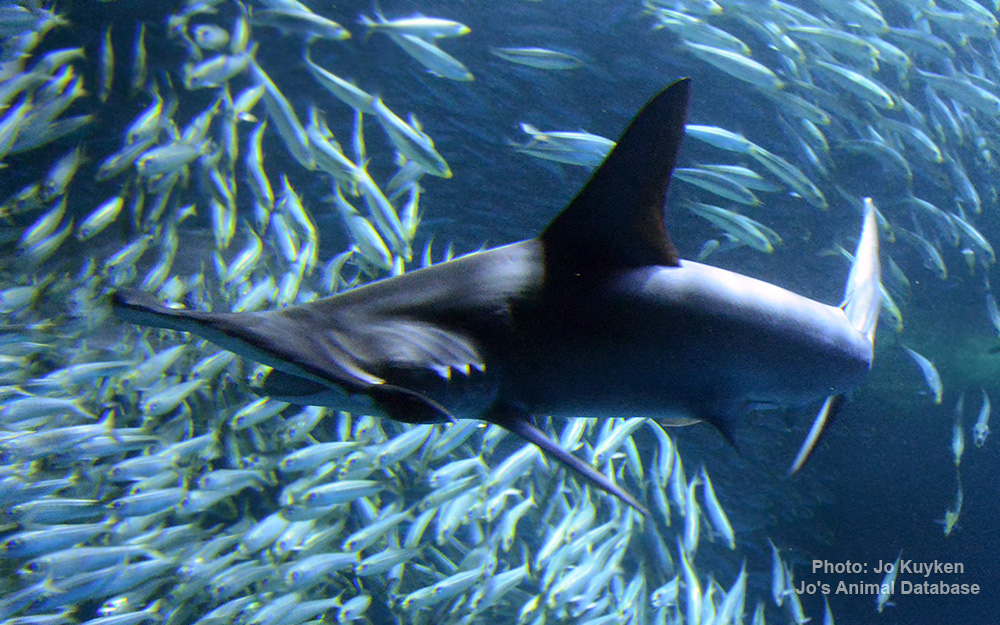Scalloped hammerhead
(Sphyrna lewini)

Image source: Jo's Animal Database
Classification
General data
This shark is also known as the bronze, kinky-headed, or southern hammerhead. It primarily lives in warm, temperate, and tropical coastal waters all around the globe between latitudes 46°N and 36°S, down to a depth of 500 m (1,600 ft). It is the most common of all hammerheads.
The scalloped hammerhead is easily distinguished from other hammerhead sharks by the central indentation on the anterior margin of the head. There are also two indentations on either side of the central indentation, which gives the scalloped look.
They have a very large first dorsal fin that is slightly hooked and a smaller second dorsal fin. Scalloped hammerhead sharks are typically uniform grey, grayish brown, bronze, or olive with a white underside for countershading.
Typically, males measure 1.5 to 1.8 m (4.9 to 5.9 ft) and weigh about 29 kg (64 lb) when they attain sexual maturity, whereas the larger females measure 2.5 m (8.2 ft) and weigh about 36.2 kg (80 lb) at sexual maturity.
The maximum length of the scalloped hammerhead is 4.3 m (14 ft) and the maximum weight is 152.4 kg (336 lb).
A female caught off of Miami was found to have measured 3.26 m (10.7 ft) and reportedly weighed 200 kg (440 lb), though was in a gravid state then.
These sharks have a very high metabolic rate, which governs behavior in acquiring food. They occupy tertiary trophic levels. The scalloped hammerhead shark, like many other species, uses the shore as a breeding ground. Due to high metabolic rates, young scalloped hammerhead sharks need a lot of food, or they will starve.
S. lewini is also noted for its large and complex brain, with high levels of cognitive capabilities, social intelligence, sensorimotor functions, intricate migrations, complex habitat relationships, and athletic capture of prey. Their social intelligence is especially important for their aggregative behavior, allowing the species to reproduce with the fittest members and more easily proliferate the species.
The dentition of these sharks consists of small, narrow, triangular teeth that have smooth edges, except in larger fish, which may have somewhat serrated teeth. The teeth in the front of the mouth have erect cusps, and the teeth in the bottom jaw have cusps that are more erect than those of the upper jaw.
The scalloped hammerhead is a coastal pelagic species; it occurs over continental and insular shelves and in nearby deeper water. It is found in warm temperate and tropical waters, worldwide from 46°N to 36°S. It can be found down to depths over 500 m (1,600 ft), but is most often found above 25 m (82 ft). During the day, they are more often found close to shore, and at night, they hunt further offshore. Adults are found alone, in pairs, or in small schools, while young sharks occur in larger schools.











